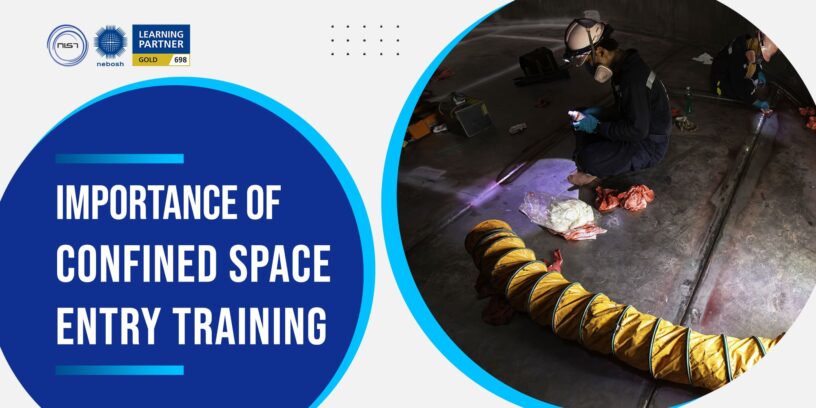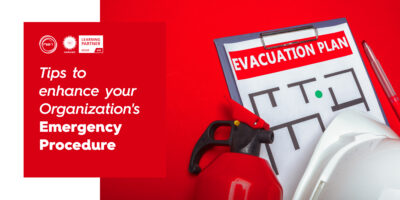A confined space is defined as any place where there are limited options available for exit and/or entry. It includes all areas that are not open to the outside air but may have some type of limited access and protection from hazards inside or outside the area, such as pipes, tanks, ducts, walls, tunnels, mines, manholes, sewers, shafts, water tanks, or similar areas where work cannot be done without access to the outside world.
When people enter these spaces, they are exposed to hazards and are at risk of death or serious injury. An injury may be caused by the failure of the occupant to escape from the confined space on time. To get through this subject area, we need to understand what happens during a collapse, why it occurs, how long it can last, for and then how we should react and how best to control a situation until help arrives and the person is recovered safely and intact – or as close to that as possible! A number of factors determine the severity of a collapse, like the size of the space, its contents, materials used, and ventilation, for example, will all influence the time taken for the air inside the space to become depleted.
Hence, one needs special awareness about confined space hazards so as to ensure the safety of oneself while working in a confined space, that too if the same is not properly ventilated or ventilating is not sufficient to remove fumes, gases, and smoke from the confined space, then it can be termed as ‘confined dangerous space’.
This is where our Confined Space Entry training comes in handy, providing you with the knowledge to help yourself or your colleagues make the right decision in these situations, even if they don’t know that you have some experience in this area!
A confined space is any space that has all of the following characteristics:
- Entry of one or more humans
- Limited or no visibility
- Potential danger to life
- Possibility of suffocation
- Possibility of explosions
- Restrictions on escape routes
There are three types of confined space accidents:
- Injuries due to sudden collapse of a structure or equipment (due to loss of structural integrity)
- Exposures to toxic, flammable or poisonous substances (for example, chemicals, gases, and vapors)
- Entrapment in confined spaces.
There are different ways that people can work safely in confined spaces. The different ways include:
- Being organised and planning the job.
- Taking time to look at the work being done and the confined space before the person enters. Knowing what hazards are in the confined space, and how they could affect the person and their equipment.
- Knowing where other hazards can be found, such as in the area of confined space.
- Knowing when a person enters a confined space.
- Using procedures to complete the work in a safe way.
- Taking precautions
- Using a self-contained breathing apparatus (SCBA)
- Using a self-contained underwater breathing apparatus (SCUBA)
- Using a confined space escape device (CSE)
- Using personal protective equipment (PPE)
- Using equipment
Objectives behind CSE training:
- To increase awareness in the given enterprise and industry about the importance of safety in confined space entry
- To promote continuous improvement in the given enterprise and industry towards safety and health management
- To reduce HSE issues and raise worker safety awareness in a specific enterprise and industry.
Benefits of CSE training:
In this training, you will learn how to enter confined spaces safely, in accordance with Occupational Health & Safety (OHS) requirements and industry best practices, in order to ensure your health and safety at all times whilst performing work activities that involve entering confined spaces or places that are not readily accessible to the public, such as underground areas, manholes, pipelines etc.
By the end of this training, learners would be familiar with,
- Precautions to reduce the risk of inhalation for workers entering a confined space (e.g., clothing that does not restrict respiration).
- Preventive measures against smoke inhalation in the case of a fire or explosion inside the space (eg, breathing protection such as a self-contained gas supply may be required).
- Identification procedures before entry into confined spaces, including health screening of workers before entry and regular inspections of confined spaces
- Entry and exit from confined spaces with the appropriate supervision.
- First aid procedures at the entrance
- The use of respiratory protection against hazards such as dust, gases, fumes, and other particles.
- Health and safety requirements of a workplace
- Work area and workplace type designation, as well as hazard identification within them
- Management of risks to which employees are exposed Management of fire risks to which employees are exposed
- Identification and avoidance of potential injury from exposure to hazardous substances.
Who needs this training?
- Confined space entrant
- Supervisors
- Emergency responsibility holders
- Safety professionals
Why NIST?
When a confined space entry is a real threat, we train employees to be aware of the hazards associated with confined space entry and to prepare for such emergencies. We require that they know what to do when encountering a confined space entry hazard. In this training, participants will learn the basics of confined spaces from a technical perspective, including entry points, exits, hazards, and hazards to health and safety (HSE). They will be shown how these hazards are presented in different confined space environments, such as warehouses, shops, production areas, etc. and they will also look at how people may attempt to enter or exit these spaces and what to do if they get trapped inside or can’t escape a confined space safely.
For further details, contact our client servicing team @ +91 9384663536 or mail us at corporate.sales@nistinstitute.com














Leave a Reply